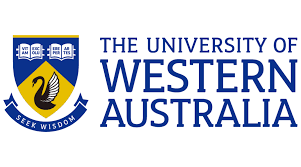University of Western Australia: More students opt for non-ATAR pathways to university
A new national study has found that the proportion of students who accessed higher education through non-ATAR (Australian Tertiary Admission Rank) pathways over the past decade has steadily increased, although the ATAR route remains the pathway for the majority of students.
The report Equity implications of non-ATAR pathways: Participation, academic outcomes, and student experience found that alternative pathways such as Vocational Education and Training (VET) courses, access schemes and enabling programs were increasingly being used by students to gain admission to university.
Lead author Dr Ian Li, Senior Lecturer in Health and Labour Economics at UWA, said the study aimed to explore the retention, academic performance and student experience outcomes of those taking non-ATAR pathways and that it showed mixed results.
“Students who entered university either through VET, mature age provisions, or on ‘another basis’, were found to have lower retention rates in their first year and over their course enrolment and lower first-year and course-weighted average marks,” Dr Li said.
“There were, however, positive findings for students from some other alternative pathways. Those who entered university through pathway providers or enabling programs had stronger retention outcomes and higher marks.
“Students who gained admission through completing another higher education course experienced a mix of outcomes – with lower retention rates but better weighted-average marks than those from ATAR pathways.
“The findings call for better support of students who enter through VET, mature age provisions or other admission pathways,” he said.
The report also examined enrolment trends, finding that disciplines such as engineering had suffered a decline in the past 10 years, while those such as health had grown in popularity.
“There have been moves in developed countries worldwide aimed at widening participation in higher education and in Australia increasing participation among underrepresented groups is a national priority,” Dr Li said.
“These include Indigenous students, those from regional and remote areas, low socioeconomic or non-English speaking backgrounds, those with a disability and women from non-traditional areas of study, including STEM or science, technology, engineering and mathematics.
“While non-ATAR pathways have played a substantial role in increasing access and participation in higher education in Australia, increased support to students who entered through some of these pathways will be needed to assist them in completing their studies, and to their full potential.
“This appears particularly important for students on STEM courses, and for Indigenous and non-English speaking background students.
“Student experience also appeared to be poorer for students from non-ATAR pathways and, given the links between student experience and academic performance, and its importance as an outcome in its own right, we need to do more to deliver on better student experience for our students.”
Sixteen universities took part in the study which was funded by the National Centre for Student Equity in Higher Education. Twelve recommendations will be presented to the government and sector.

